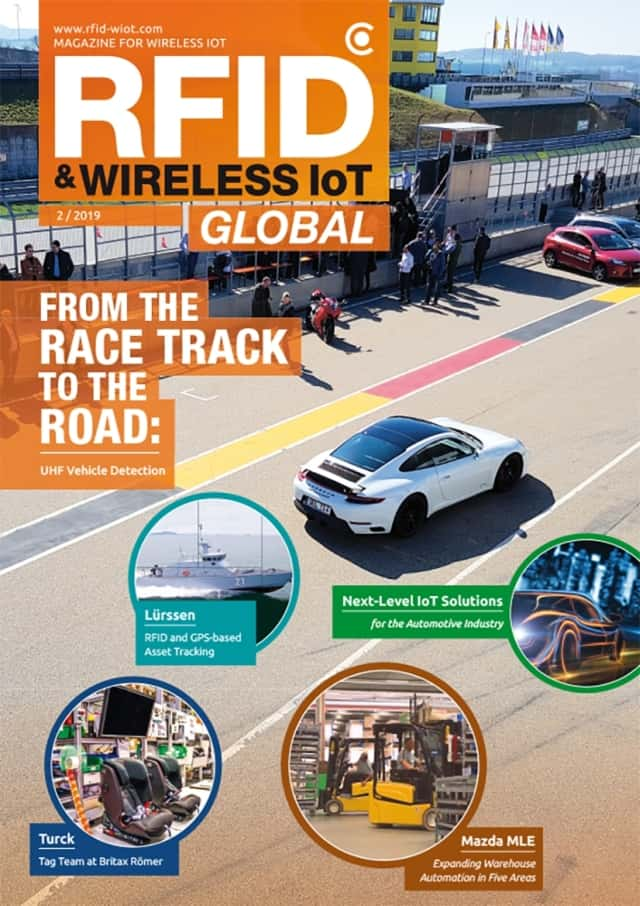RFID & Wireless IoT in Automotive
AI or digitalisation are not possible without wireless hardware!
Use cases by Mazda Motor Logistics Europe, Britax Römer and Lürssen as well as content on next level IoT hardware solutions for the automotive industry illuminate technology trends in 2019.
In this issue
Dear readers,
This issue focuses on technology articles and application descriptions in the area of "Automotive". Normally it is easy to place the topic RFID and Wireless IoT in the center of considerations and evaluation during editorial meetings and to place it as a lead story. That was different in the preparatory work for this issue.
The topic 'automotive e-vehicle industry' constantly motivated error analysis with the focus question: "Why aren't the possibilities of electromobility already implemented to a much greater extent?”
By the end of 2018, almost 200,000 electric vehicles had been registered in Germany. This is 0.42 percent of the total number of passenger cars (47.1 million). Originally, one million electric cars were to roll into the roads in Germany by 2020 – that was the German government's plan. Now the target will be postponed to 2022.
The number of hydrogen-powered vehicles in Germany is less than 1,000. The situation in Norway is quite different: 31.2 percent of all new cars sold last year were emission-free. Norway is the undisputed leader with an electric car share of 53 percent of all new registrations. This is mainly due to political reasons, as electric mobility is heavily subsidised in Norway.
In direct relation to this are autonomous driving and AI scenarios. These approaches still rank as research topics or test runs. In the course of the networking and digitalisation of the automobile, however, the future of autonomous driving has long since come within reach.
Overall, we take these changes as disruptive processes. The integration of RFID or other wireless technologies is almost secondary. However, this situation will change very quickly as new generations of vehicles roll off the assembly lines and built-in sensors and telematics turn the car into a moving and forward-looking computer. AI or digitalisation are not possible without wireless hardware. This applies to production, the supply industry, logistics and, in the future, driving itself.
It is to be hoped that the coming development steps will see the combination of wireless technology, sensor technology, and AI as the highest objective for bringing the car of the future onto the road.
There will be no way around a future with electric vehicles – whether battery or hydrogen powered. That is the consensus in industry and politics. Companies in the automotive supply chain and their employees will be affected by this paradigm shift from the combustion engine to the electric motor. Since the construction of an e-vehicle involves around 30 percent less effort than current vehicles, the effects on society must be considered in parallel with technological advances.
Anja Van Bocxlaer
Chief Editor RFID & Wireless IoT Global













